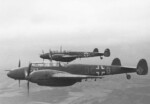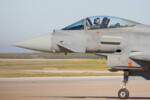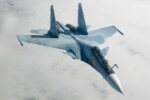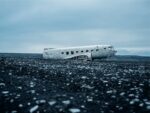12 Incredible American Fighter Planes of WW2 and What Made Them Special
28 November 2021 | Updated on February 05, 2024
American WW2 fighters represented an era when aircraft designers were forced to push the boundaries of aircraft technology. This was caused by rapidly changing realities of aircraft combat performance and deadly competition from superior German and Japanese WWII fighters.
The need to develop and manufacture quicker and better handling planes faster than were shot down, forever changed how aircraft were made. This prompted aircraft designers to introduce revolutionary new engine and airframe designs resulting in better handling warplanes and bombers that could outrun, outgun, climb faster, and operate longer than the enemy fighters.


This article celebrates 12 special American fighter planes of WW2 and their performances, though perhaps not impressive according to modern aviation standards. It exemplifies a period in history that recorded the most unprecedented evolution in aircraft technology.
Read on to discover all aircraft and what made each of them unique!
12 Incredible American Fighter Planes of WW2
#12. Seversky P-35
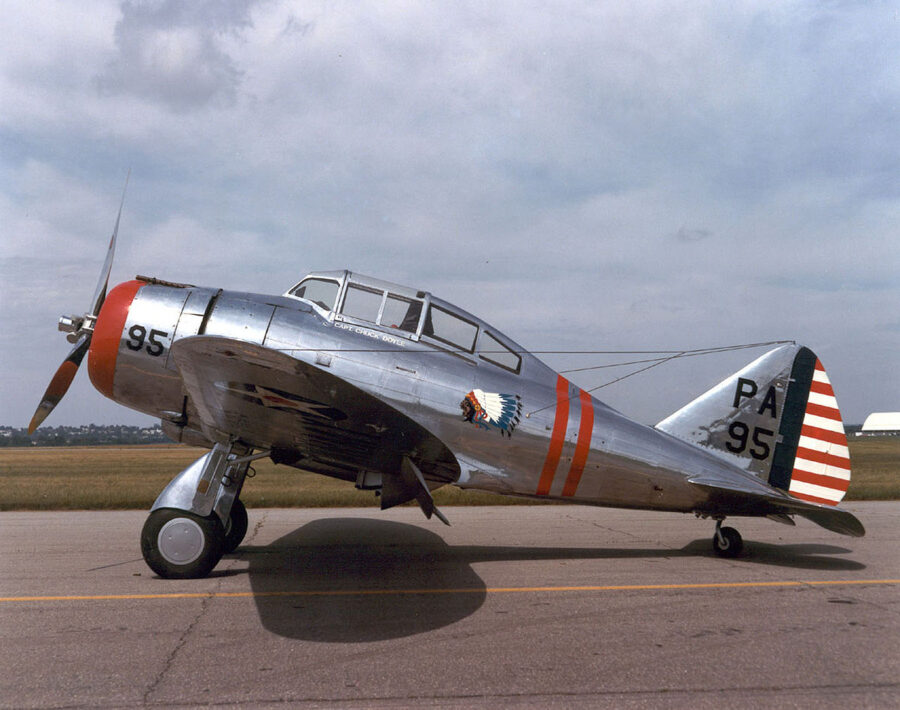

- Manufacturer – Seversky Aircraft Company
- Max Speed – 290 mph (467 km/h)
- Introduction – 1937
- Role – Fighter aircraft
- Engine – Pratt & Whitney R-1830-45 Twin Wasp radial engine, 1,050 hp (783 kW)
- Configuration – Single engine, single-seat
- Service Ceiling – 31,400 ft (9,570 m)
- Guns – 2 Cowl-mounted 7.9 mm (.311 in) and 2 wing-mounted 2 x 13.2 mm (.52 in)
- Range – 950 mi (1,530 km, 826 nmi)
- No Built – 196
- Retired – 1952
Built by the Seversky Aircraft Company in the late 1930s. The P-35 is one of the first United States Army Air Corps single-seat WWII fighters with an all-metal airframe. Other unique features differentiating the fighter from other World Warplanes of the era include an enclosed cockpit and retractable landing gear. Comparable WW2 planes include Hawker Hurricane and Messerschmitt Bf 109.
The Far East Air Force flew variants of the P-35 alongside other United States WW2 fighters during the Japanese invasion of the Philippines. Sweden purchased 60 EP-106 variants of the P-35 for the Swedish Air Force designated as J-, and operated the aircraft for more than a decade. Making the Seversky P-35 one of the few planes from WW2 to perform both war and peacetime missions for the same operator.
#11. Curtiss P-36 Hawk
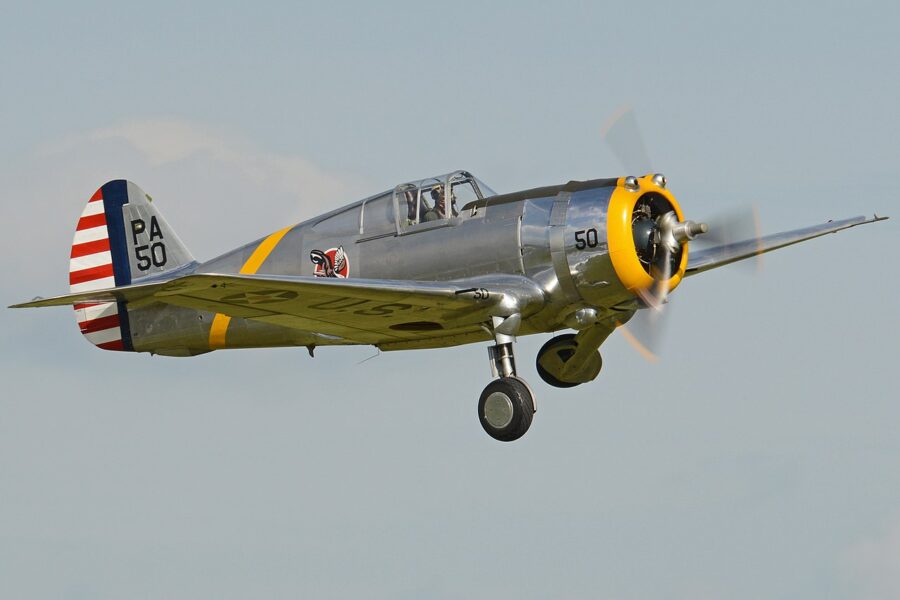

Photo by Alan Wilson
- Manufacturer – Curtiss Wright Corporation
- Max Speed – 455 mph (732 km/h)
- Introduction – 1938
- Role – Fighter aircraft
- Engine – Pratt & Whitney R-2800-30W Double Wasp 18-cylinder radial piston engine, 2,250 hp (1,680 kW)
- Configuration – Single engine, single-seat
- Service Ceiling – 40,800 ft (12,400 m)
- Range – 1,105 mi (1,778 km, 960 nmi)
- Guns – 0.30 in (7.62 mm) M1919 Browning machine gun, 1 × 0.50 in (12.7 mm) M2 Browning machine gun
- No Built – 1,000+
- Retired – 1954
The Curtiss P-36 Hawk (or Curtiss Hawk Model 75) is among the earliest American WW2 fighters to feature an almost universal metal construction in a monoplane design. Sharing similar airframe design and performance with few planes from WW2, including Messerschmitt Bf 109 and Hawker Hurricane. The P-36 saw the least amount of combat compared to other WWII fighters in the service of the United States Air Force. But It was one of the most exported American planes in WW2, serving extensively in Europe with the French Armee de l’air during the Battle of France. It secured impressive aerial victories against more modern Luftwaffe aircraft.
The P-36 Hawk has one of the minor production numbers for WW2 planes. However, most P-36s were manufactured under license by several American World War 2 allies, including China and British India.
#10. Curtiss P-40 Warhawk
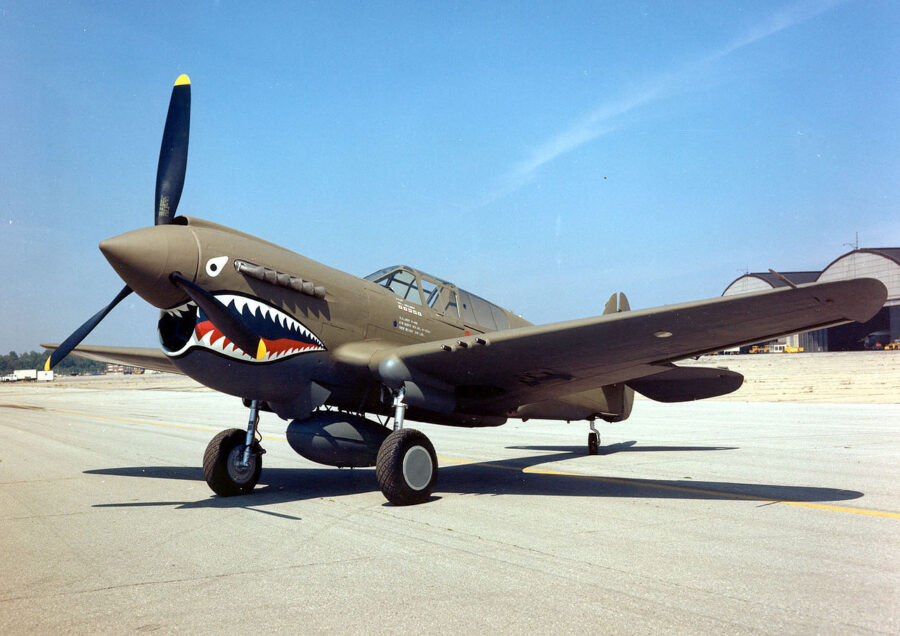

USAF – National Museum of the U.S. Air Force photo 050215-F-1234P-065
- Manufacturer – Curtiss Wright Corporation
- Max Speed – 334 mph (538 kph)
- Introduction – 1938
- Role – Fighter aircraft, Ground attack aircraft
- Configuration – Single engine, single-seat
- Engine – Supercharged Allison V-1710-39 V-12 piston engine, 1,240 hp (920 kW)
- Service Ceiling – 29,100 ft (8,900 m)
- Range – 716 mi (1,152 km, 622 nmi)
- Guns: Wing-mounted, 6 × 0.5 in (12.7 mm) M2 Browning machine guns.
- No Built – 13,738
- Retired – 1958
Arguably, the unsung hero of World War II aerial warfare, the Curtiss P-40 Warhawk saw combat throughout WWII, flying more missions in all WWII conflict theaters than most planes in WW2. It was critical in eliminating the Pacific Japanese air supremacy during the early 40s. Older and less popular than most WW2 fighters, the P-40 Warhawk was a reliable workhorse. It was one of only two American planes to engage and shoot down Japanese aircraft during the attack on Pearl Harbor.
Scores of American and allied pilots racked up impressive kills against enemy aircraft in the P-40, with 23 American pilots becoming aces in the Mediterranean Theater of Operations during the first six months of 1943. And around 40 US pilots became aces in the China Burma India Theater. Similarly, 46 British Commonwealth pilots with the Desert Air Force reached ace status in P-40s during the Middle East and North African campaigns.
The Curtiss P-40 ranks among WW2 planes with the largest production numbers (third largest production). It was in production throughout the war’s duration and was nearly obsolete by the war’s end.
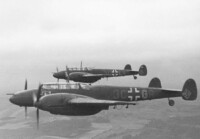

Recommended
The 10 Best German Fighter Planes of WW2
#9. Brewster 2FA Buffalo
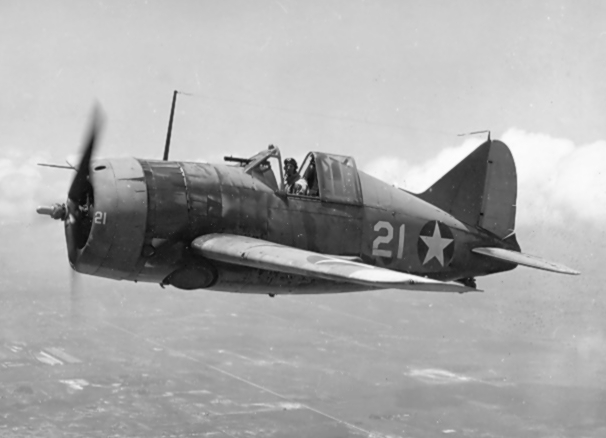

U.S. Navy – U.S. Naval History and Heritage Command photo
- Manufacturer – Brewster Aeronautical Corporation
- Max Speed – 321 mph (517 km/h)
- Introduction – 1939
- Role – Fighter aircraft
- Engine – Wright R-1820-40 Cyclone 9 9-cyl radial piston engine, 1,200 hp (890 kW)
- Configuration – Single engine, single-seat
- Service Ceiling – 33,200 ft (10,100 m)
- Range – 965 mi (1,553 km, 839 nmi)
- Guns – Nose-mounted 2 × 0.50 in (12.7 mm) M2 Browning machine guns, wing-mounted 2 × 0.50 in (12.7 mm) M2 Browning machine guns
- No Built – 509
- Retired – 1948
The Brewster F2A Buffalo is an American WWII fighter aircraft and the U.S Navy’s first monoplane fighter aircraft. The F2A was one of the most widely exported United States planes in WW2. And it served in numerous war theaters around the globe. Notably, American-made F2A Buffalos bought by the Finnish government before WWII were used to significant effect against the Soviet Air Force, which was a key United States WW2 ally.
#8. Lockheed P-38 Lightning
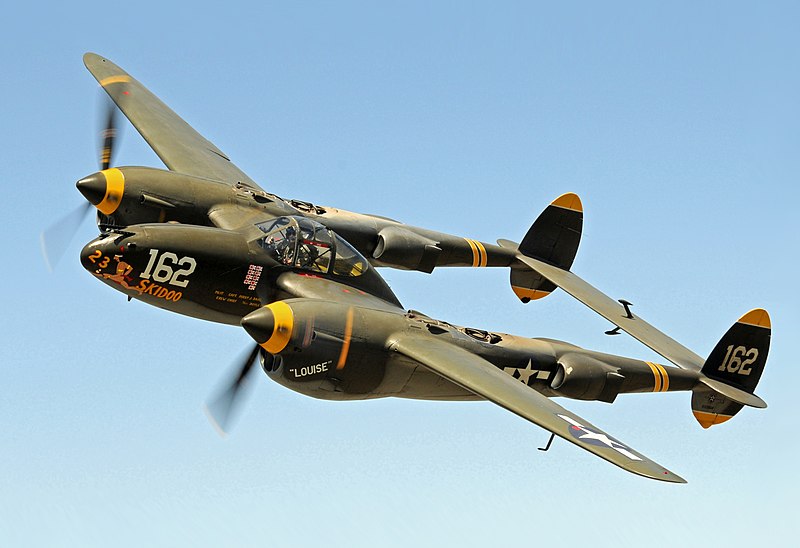

Photo by Wikipedia user CindyN
- Manufacturer – Lockheed Corporation
- Max Speed – 414 mph (666 km/h)
- Introduction – 1941
- Role – Multirole fighter aircraft
- Engine – 2 Allison V-1710 (-111 left-hand rotation and -113 right hand rotation) V-12 turbo-supercharged piston engine, 1,600 hp (1,200 kW) each
- Configuration – Twin engine, single-seat
- Service Ceiling – 3,300 mi (5,300 km, 2,900 nmi)
- Range – 44,000 ft (13,000 m)
- Guns – Nose-mounted 1× Hispano M2(C) 20 mm cannon with 150 rounds, 4 × M2 Browning machine gun 0.50 in (12.7 mm)
- No Built – 10,037
- Retirement – 1965
The P-38 Lightning was one of the most unusual-looking American WW2 fighters. It has a central nacelle (incorporating the cockpit, main landing gear, and guns) suspended between distinctive twin booms housing the engines, outer landing gear, and the twin tail assembly. It was Lockheed designers’ successful attempt to introduce contemporary aircraft design in their WW2 planes. And unlike most planes in WW2, the P-38 was the only fighter in continuous large-scale production throughout the entire war.
The P-38 excelled in various multirole missions for the United States Army Air Corps across critical war theaters. This is due to the twin-engined reliability of the P-38, which provided excellent performance at low or high altitude missions over land and water. The aircraft’s top speed of over 400 mph (640 kph) ranks it among the fastest planes from WW2.
According to records, P-38 pilots were responsible for shooting down more Japanese warplanes than other American WW2 planes in the Pacific Theater of Operations and the China-Burma-India Theater of Operations. On 18th April 1943, P-38 Lightning aircraft intercepted and shot down two Japanese Mitsubishi G4M military transport planes. One was ferrying the Japanese official responsible for the attack on Pearl Harbor, Admiral Isoroku Yamamoto, who died in the attack.
#7. P-39 Airacobra
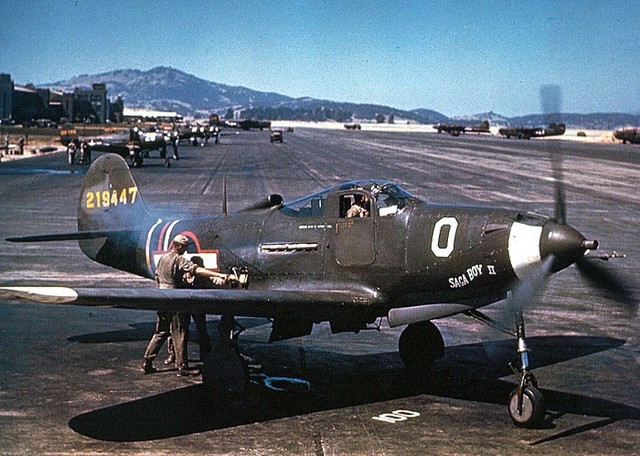

Photo by USAAF – WWII in color
- Manufacturer – Bell Aircraft
- Max Speed – 389 mph (626 km/h)
- Introduction – 1941
- Role – Fighter
- Engine – Allison V-1710-85 V-12 piston engine, 1,200 hp (890 kW)
- Configuration – Single engine, single-seat
- Service Ceiling – 35,000 ft (11,000 m)
- Range – 525 mi (845 km, 456 nmi)
- Guns – Nose-mounted 2 × .50 caliber synchronized Browning M2 machine guns, 1 × 37 mm M4 cannon
- No Built – 9,588
- Retired – 1951
Although, the P-39 Airacobra was the top WWII fighter in U.S military service at the beginning of the United States involvement in the war. The Bell aircraft recorded its most significant success with the Soviet Air Force, where P-39 pilots scored the highest number of individual kills attributed to any American WW2 fighter-type flown by her war allies.
The P-39 was the first pre-WW2 plane to be equipped with the tricycle landing gear. Bell engineers installed the aircraft engine in the center fuselage, behind the cockpit, and a long driveshaft sent power to the propeller. This unusual design feature set the Bell P-39 Airacobra apart from other WW2 planes.
#6. Republic P-47 Thunderbolt


Photo by US Air Force
- Manufacturer – Republic Aviation
- Max Speed – 426 mph (686 km/h)
- Introduction – 1942
- Role – Fighter-bomber
- Engine – Pratt & Whitney R-2800-59 18-cylinder radial piston engine, 2,000 hp (1,500 kW)
- Configuration – Single engine, single-seat
- Service Ceiling – 42,000 ft (13,000 m)
- Range – 1,030 mi (1,660 km, 900 nmi)
- Guns – 8 x .50 in (12.7 mm) M2 Browning machine guns (3400 rounds)
- No Built – 15,636
- Retired – 1966
The Republic P-47 Thunderbolt is a WW2 fighter aircraft produced by Republic Aviation. It was larger, heavier, and more expensive than most comparable WW2 planes of the era. Another name for the WWII fighter was ” jug,” Pilots developed a great respect for its impressive firepower, airspeed, and rugged airframe, which could take astounding levels of damage during combat and remain air-worthy. The P-47 was designed as a fighter aircraft, but pilots soon realized the plane could carry bombs on belly shackles for short-range bombing missions.
The Republic P-47 Thunderbolt was active in the European and Pacific theaters of WWII. It was one of the few planes from WW2 to effectively operate in various multirole missions, with its pilots attaining the highest kill to death ratio of any other WW2 plane.
#5. North American P-51 Mustang
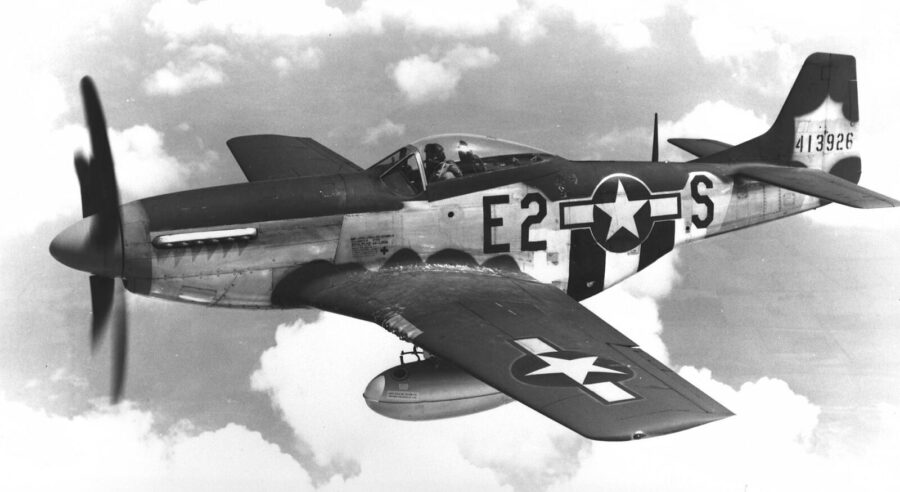

Photo by U.S. Air Force – North American P-51 Mustang figher plane over France.
- Manufacturer – North American Aviation
- Max Speed – 440 mph (710 km/h)
- Introduction – January 1942
- Role – Fighter aircraft
- Engine – Packard (Rolls Royce) V-1650-7 Merlin 12-cylinder, 1,490 hp (1,110 kW) Configuration – Single engine, single-seat
- Service Ceiling – 41,900 ft (12,800 m)
- Range – 1,650 mi (2,660 km, 1,434 nmi)
- Guns -: 6 × 0.50 caliber (12.7mm) AN/M2 Browning machine guns
- No Built – 15,000+
- Retired- 1984
The North American P-51 Mustang represents the pinnacle of American aviation development during World War 2. The aircraft is a remarkable testament to the rapid progression of American WW2 planes from the unreliable and underpowered early WW2 fighters dubbed flying coffins. This North American Aviation WWII fighter was conceived as a British fighter for the Royal Air Force RAF and manufactured under license from Curtiss Wright Corporation. Fortunately, the proposal was scrapped, and a more modern design was approved.
The P-51 Mustang had the shortest development period compared to other World War planes, and it would go on to be among the most produced planes in WW2. The P-51 filled a gaping hole left by existing American WWII fighters operating in the European theater by providing much-needed long-range escorts to allied bomber missions across Europe. The aircraft’s combination of speed, maneuverability, and long-range operation devastated the indomitable Luftware fighting force. It shattered German illusions of European hegemony and hastened the end of the war in Europe by opening up the skies to allied aircraft. Perhaps, the best validation of the P-51 absolute air supremacy was Hermann Göring, commander of the Luftwaffes’ famous statement, “When I saw Mustangs over Berlin, I knew the jig was up.”
We got the chance to fly an original full-dual-control TF-51D a few years ago in Belgium, you can read about this amazing experience here:
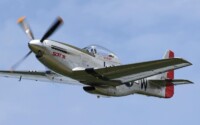

Learn more
Flying the Legendary P51 Mustang – SCAT VII
#4. Vought F4U Corsair
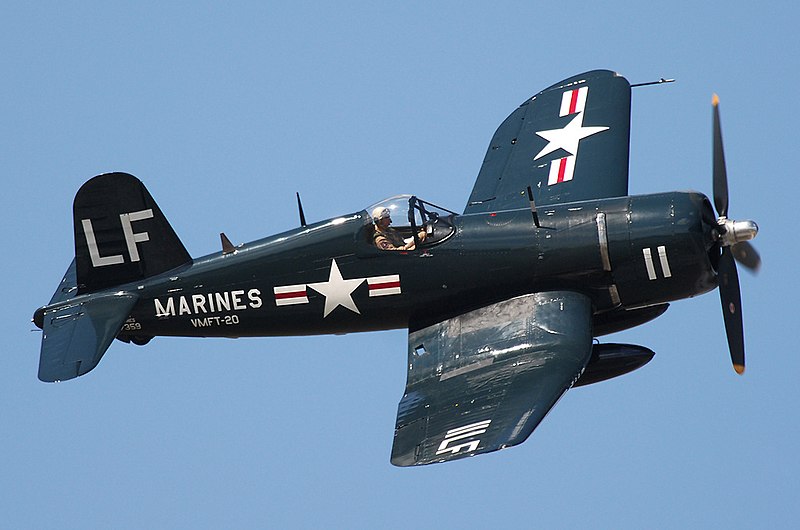

Photo by Gerry Metzler
- Manufacturer – Chance Vought
- Max Speed – 446 mph (717 km/h)
- Introduction – 1942
- Role – Carrier-based fighter-bomber
- Engine – Pratt & Whitney R-2800-18W radial engine, 2,380 hp (1,770 kW)
- Configuration – Single engine, single-seater
- Service Ceiling – 41,500 ft (12,600 m)
- Range – 1,005 mi (1,617 km, 873 nmi)
- Guns – Wing-mounted 6 × 0.50 in (12.7 mm) M2 Browning machine guns.
- No Built – 12,571
- Retired – 1979
The F4U Corsair was a carrier-based fighter aircraft and was one of the last WW2 planes to enter war service. It has one of the longest production runs compared to other piston-engined WWII fighters. Much of the F4U Corsair operation was in the Pacific theater, where it was the most deployed aircraft between 1942 until 1944. It shared design features with other carrier-based WWII fighters, including a pair of folding wings and a complex landing gear system. However, the F4U Corsair was more successful in service of the U.S Marine Corps, where it performed creditably alongside conventional American land-based WW2 fighters, achieving an 11:1 kill ratio against Japanese WW2 planes.
#3. Grumman F6F Hellcat
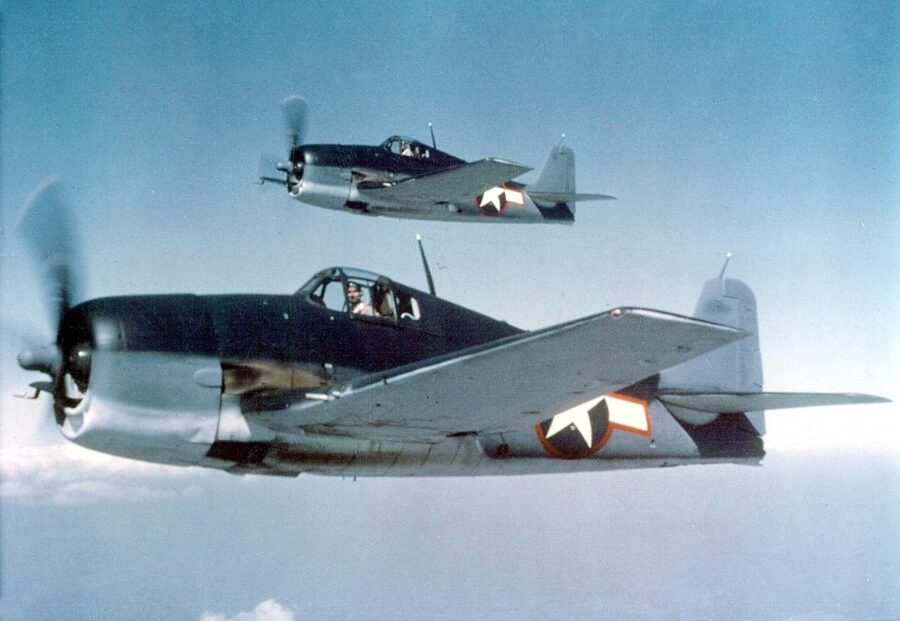

Photo by USN
- Manufacturer – Grumman
- Max Speed – 391 mph (629 km/h)
- Introduction – 1943
- Role – Carrier-based fighter aircraft
- Engine – Pratt & Whitney R-2800-10W Double Wasp 18-cylinder radial piston engine, 2,200 hp (1,600 kW) Configuration – Single engine, single-seater
- Service Ceiling – 37,300 ft (11,400 m)
- Range – 1,530 mi (2,460 km, 1,330 nmi)
- Guns – 6 × 0.50 in (12.7 mm) M2 Browning machine guns, 2 × 0.79 in (20 mm) AN/M2 cannon, 4 × 0.50 in (12.7 mm) Browning machine guns
- No Built – 12,275
- Retired – 1963
The Grumman F6F Hellcat was one of two American carrier-based WW2 fighters in development during the war. However, the aircraft’s superior performance over the Vought F4U Corsair made it one of the dominant naval fighter planes in WW2. The F6F Hellcat was a well-designed and rugged carrier fighter with the primary combat mission of destroying the threat of the Japanese Mitsubishi A6M Zero. And though the aircraft wasn’t among the fastest naval WWII fighters, it had a kill ratio of more than 12:1 against the Japanese A6M Zero.
The F6F Hellcat played a vital role in American efforts to secure air superiority over the Pacific theater. F6F Hellcat pilots destroyed a total of 5,223 enemy aircraft, giving the F6F Hellcat more confirmed kills than any other allied naval planes from WW2.
#2. Northrop P-61 Black Widow
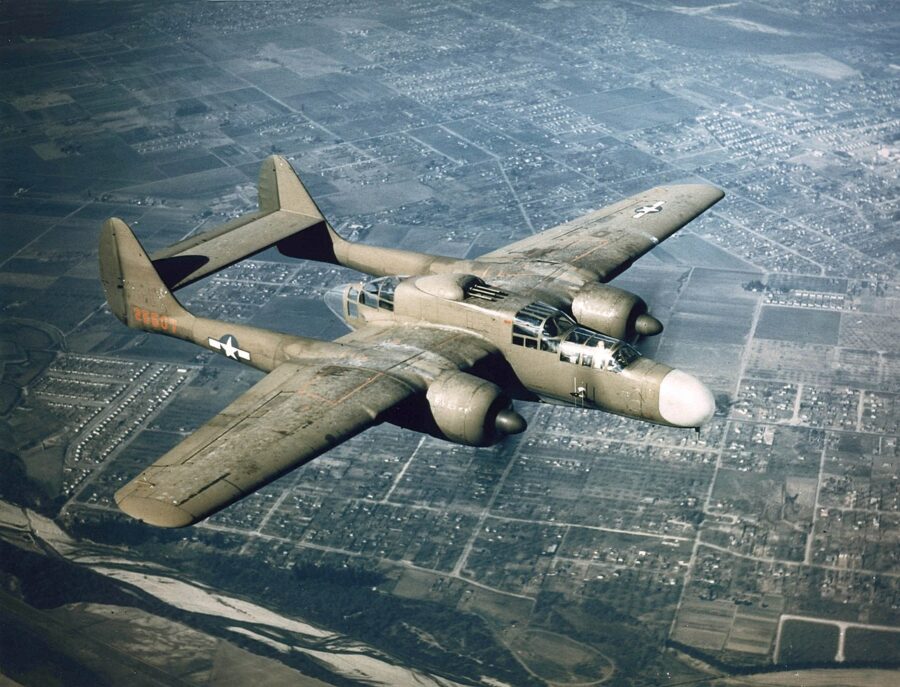

- Manufacturer – Northrop
- Max Speed – 366 mph (589 km/h)
- Introduction – 1944
- Role – Night fighter
- Engine – Twin Pratt & Whitney R-2800-65W Double Wasp 18-cylinder radial piston engines, 2,250 hp (1,680 kW) each
- Configuration – Twin engine, three-seater
- Service Ceiling – 33,100 ft (10,100 m)
- Range – 1,350 mi (2,170 km, 1,170 nmi)
- Guns – 4 x 20 mm (.79 in) Hispano M2 forward-firing cannon mounted in the lower fuselage, 4 x remote-controlled .50 caliber (12.7 mm) M2 Browning machine guns.
- No Built – 706
- Retired – 1954
Engineers at Northrop designed the P-61 Black Widow from scratch as the first operational American night fighter and the first plane in WW2 to use radar. The Black Widow had a crew of three; pilot, gunner, and radar operator. And costing $190,000 per prop, the black widow was one of the most expensive WWII fighters.
The P-61 Black Widow was primarily operated by the United States Air Force flight crews as a night-fighter. But it was also adapted for a variety of all-weather, long-range, daylight/night interceptor, or photo reconnaissance missions. The black Widow saw combat duties in almost every critical conflict theater during World War 2. Unofficial reports also credited the P-61 Black Widow with the last enemy aircraft kill of WWII.
#1. Grumman F8F Bearcat
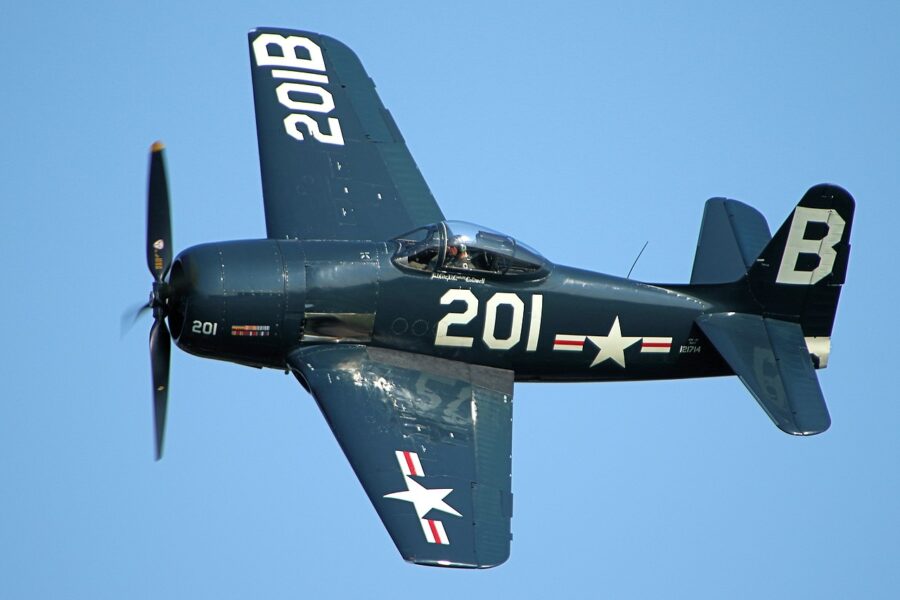

Photo by Wikipedia user Airwolfhound
- Manufacturer – Grumman
- Max Speed – 455 mph (732 km/h)
- Introduction – 1945
- Role – Fighter aircraft
- Engine – Pratt & Whitney R-2800-30W Double Wasp 18-cylinder radial piston engine, 2,250 hp (1,680 kW)
- Configuration – Single engine, single-seat
- Service Ceiling – 40,800 ft (12,400 m)
- Range – 1,105 mi (1,778 km, 960 nmi)
- Guns – Wing mounted 4 × 20 mm (.79 in) AN/M3 cannon
- No Built – 1,265
- Retired – 1963
In retrospect, the single-engine carrier-based fighter heralded the end of an era. It was the last model of piston-engined WW2 fighters to be manufactured. And engineers at Grumman decided to remake the F8F Bearcat, a lasting legacy to prior WWII fighters, by wrapping a small, lightweight airframe around the most powerful available engine to create one of the most agile and deadly planes from WW2. Due to its hot rod design, the F8F Bearcat is considered among the best-handling piston-engine WWII fighters ever built due.
To fulfill the F8F role as a Naval carrier aircraft, the airframe was extensively modified. The F8F Bearcat was in service in the United States Navy, the United States Marine Corps, and the air forces of other nations, including the French Air Force, among others. Today, there are more airworthy F8F Bearcat airframes than other WW2 planes due to their popularity as air racers.


























